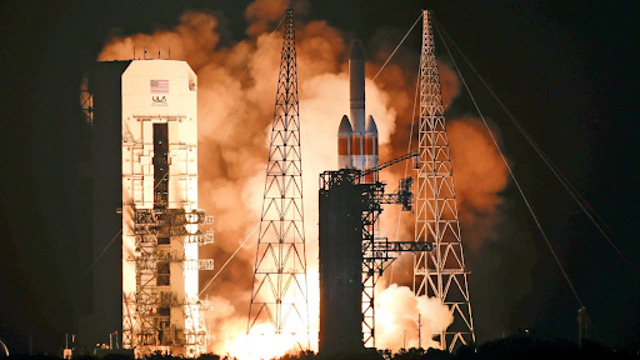
On Sunday, August 12, 2018, a Delta IV rocket carrying the Parker Solar Probe launched from Launch Complex 37 at the Kennedy Space Center in Cape Canaveral, Florida. AP Photo
NASA’s Parker Solar Probe has successfully completed the closest-ever approach to the Sun by any human-made object, according to the space agency. The spacecraft passed within just 3.8 million miles (6.1 million kilometers) of the solar surface on December 24, flying into the Sun’s outer atmosphere, known as the corona. Despite the extreme heat and high speeds, NASA confirmed the probe was “safe” and functioning normally.
The milestone is a significant achievement in space exploration, as the Parker Solar Probe's mission is to collect critical data to better understand our closest star, the Sun. The spacecraft’s operations team, based at the Johns Hopkins Applied Physics Laboratory in Maryland, received a beacon tone from the probe just before midnight on December 28, confirming its safe passage. This signal marks a key moment in the mission, which aims to explore the Sun’s behavior in ways never done before.
The Parker Solar Probe is not just taking photographs; it is gathering important scientific data, providing insights into how the Sun’s outer atmosphere behaves, and offering a glimpse into how solar winds, which can affect space weather, are generated. The spacecraft is also studying how particles in the Sun’s atmosphere are heated to extreme temperatures, reaching up to 1,800°F (982°C). This heat is vital in understanding how materials in the Sun’s corona behave and what causes the solar wind to accelerate.
The spacecraft is traveling at an incredible speed of up to 430,000 miles per hour (692,000 kilometers per hour), a speed so fast it allows it to perform flybys of Venus, which assist in pulling it closer to the Sun. This approach has made it possible for the probe to gather unique and invaluable data that will change how scientists view solar physics. Dr. Joseph Westlake, NASA’s heliophysics director, commented that this mission has the potential to completely alter existing theories about the Sun. He noted that the work on the Parker Solar Probe began in the 1950s, and it is now a reality thanks to advancements in technology.
The probe was launched in 2018, and since then, it has been gradually getting closer to the Sun, aiming to make new discoveries that can help scientists understand how the Sun’s solar wind is formed and what fuels solar activity. The data gathered will also shed light on how energetic particles are accelerated to near light speed.
This recent close pass is just one of many the spacecraft will make during its extended mission phase. Over the coming months, the team plans to use these flybys to capture even more unique data that could help answer long-standing questions about the Sun and its impact on our solar system.
NASA is eagerly awaiting more detailed telemetry data, expected on January 1, which will provide a deeper understanding of the spacecraft's status and the scientific findings so far. The Parker Solar Probe is on track to continue its groundbreaking work, offering us a closer look at the Sun than ever before.















